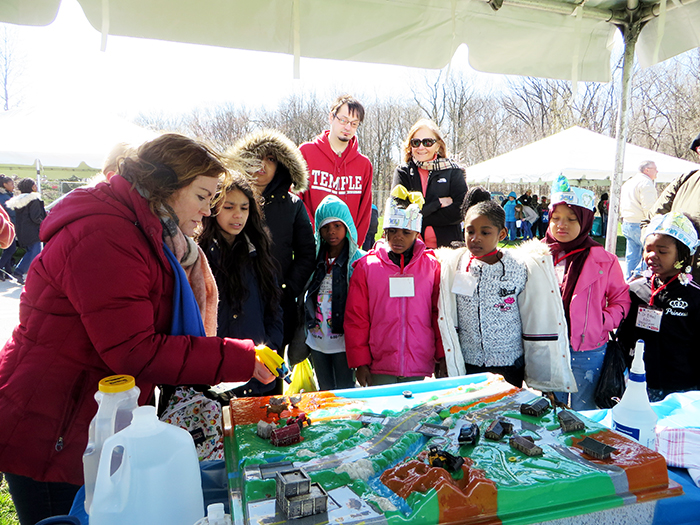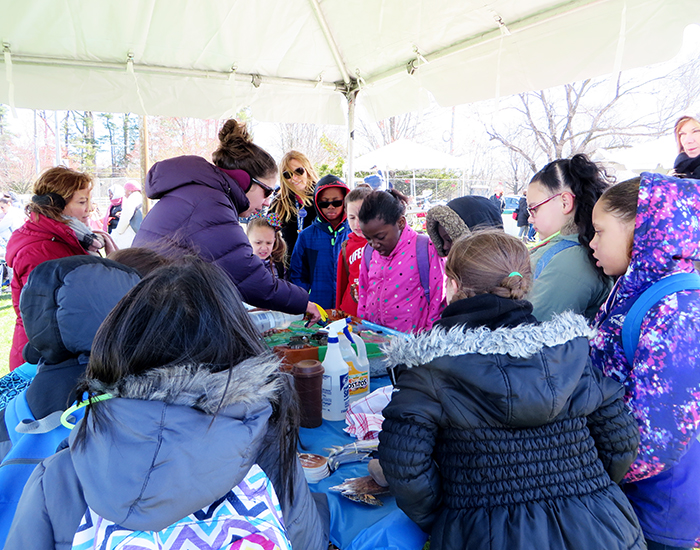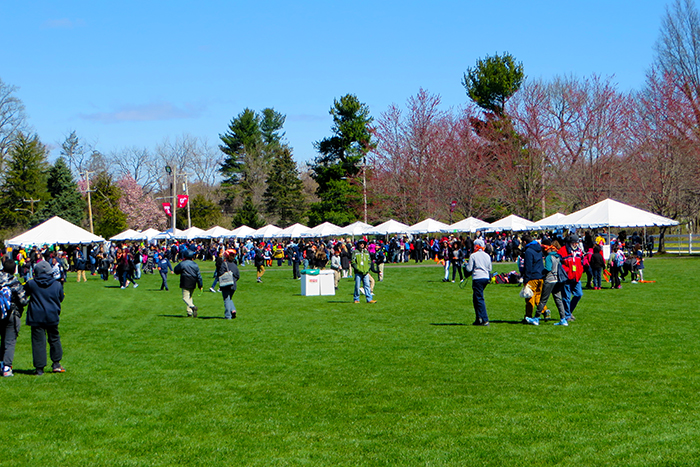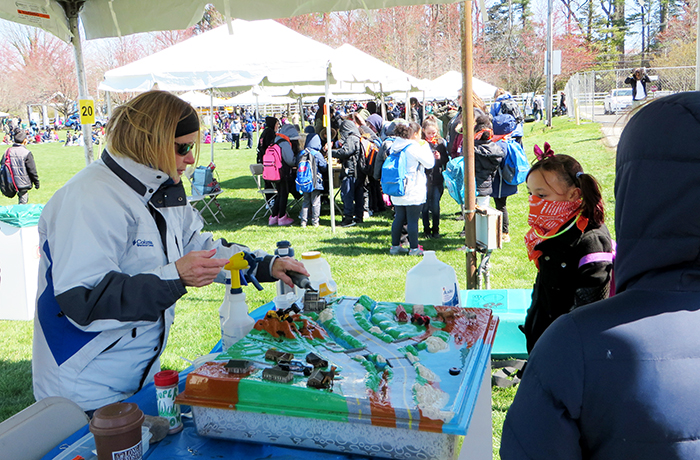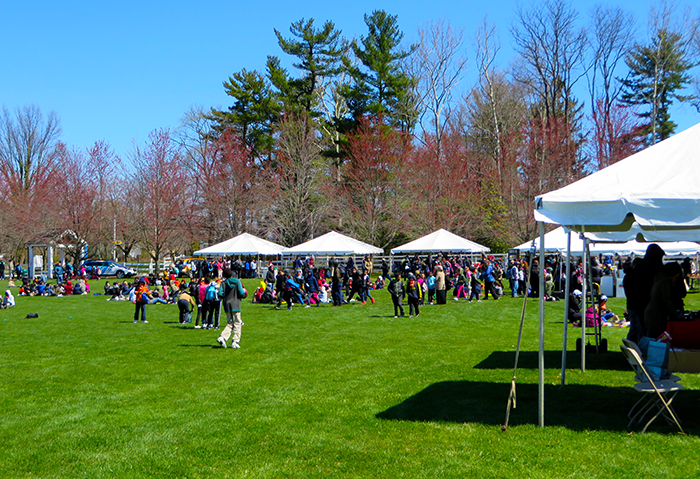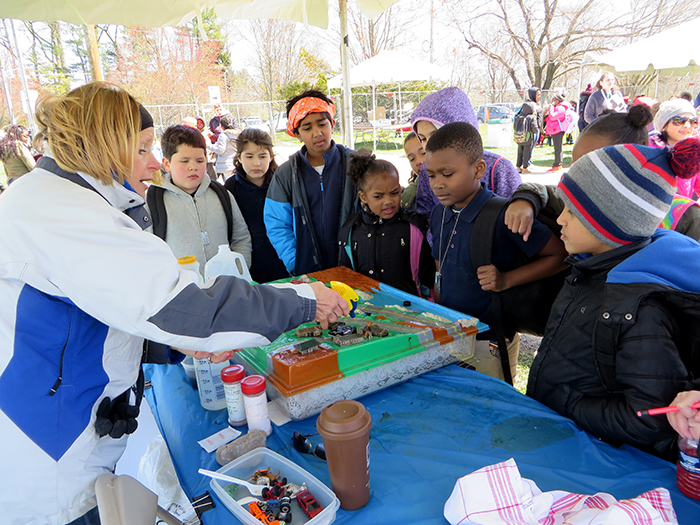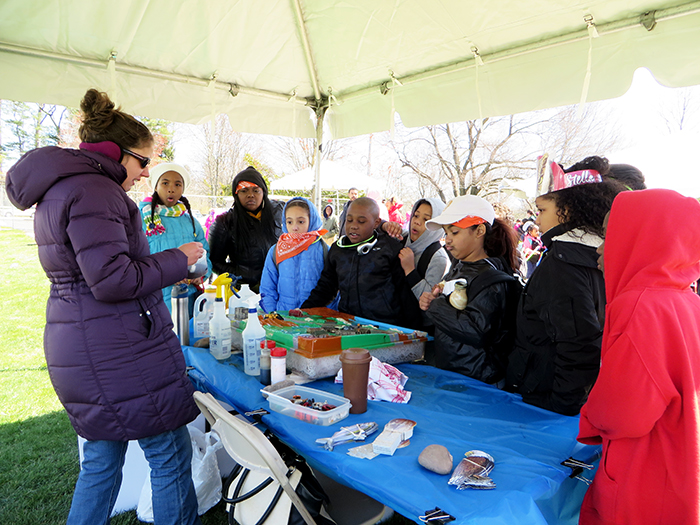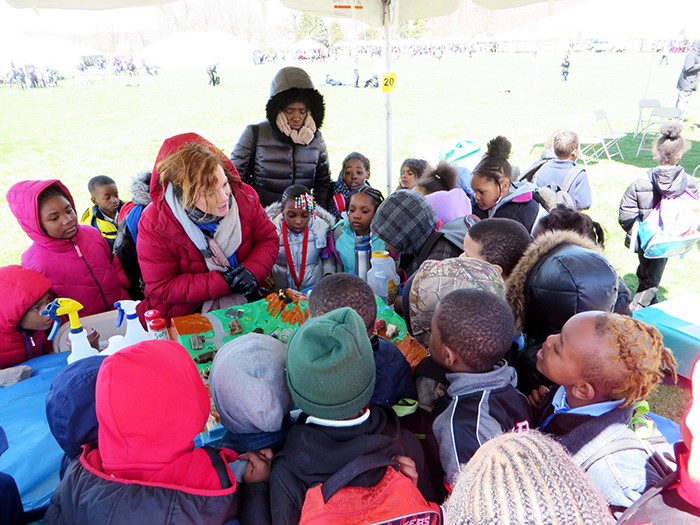Delaware • New Jersey • Pennsylvania
New York • United States of America
DRBC staff enjoy and appreciate the opportunity to get out in the field and interact with the public. Last month on April 20, DRBC staff braved wind chills in the low 30s to share their expertise at Temple University Ambler’s EarthFest, a free, annual outdoor celebration geared for kids of all ages showcasing hands-on learning activities.
Over the years, DRBC has been a frequent EarthFest exhibitor and was proud to again participate this year, using its Enviroscape Model to teach about different sources of water pollution. The model is always a hit with kids, especially younger children, as it demonstrates in a visually engaging way the connection between land and water and what we all can do to help keep our waterways clean.
Hosted by Temple University Ambler, EarthFest is held on Ambler's campus and celebrates Earth Day by promoting environmental awareness and protection using sustainable concepts, methods, and practices. This year’s EarthFest attracted over 5,000 students and featured more than 75 different exhibits. To learn more about EarthFest, please click here; a recap of the 2018 event can also be found here.
Copyright © Delaware River Basin Commission,
P.O. Box 7360, West Trenton, NJ 08628-0360
Phone (609)883-9500; Fax (609)883-9522
Thanks to NJ for hosting the DRBC website
